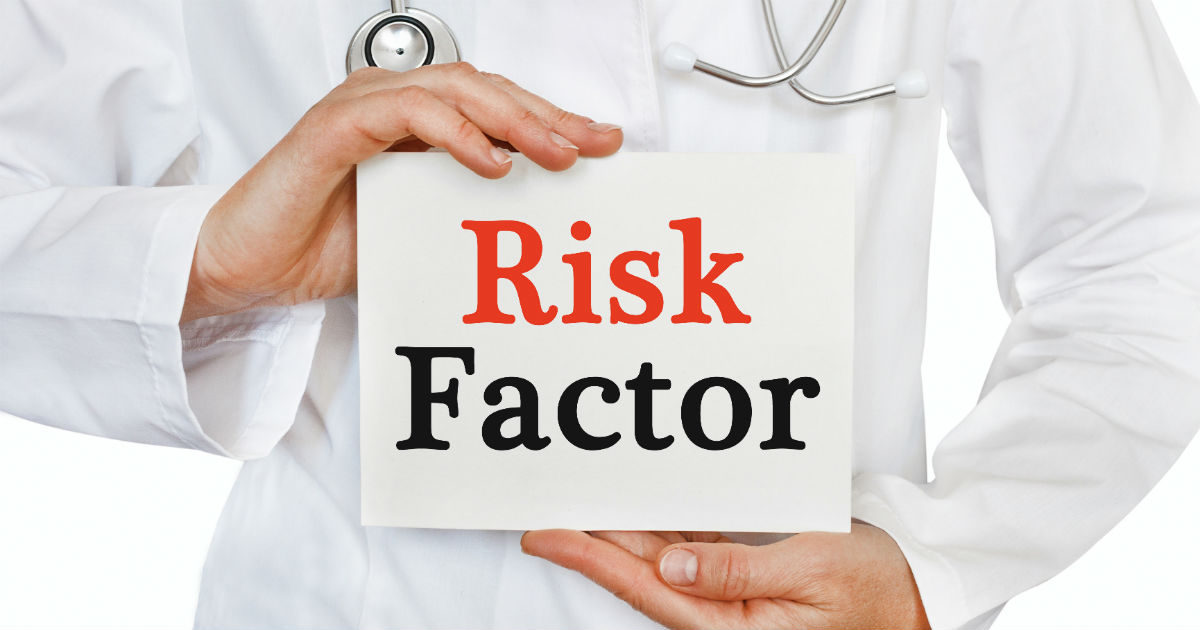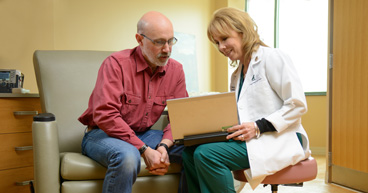
One in two men and one in three women will develop cancer in their lifetime. And in most cases, those who get cancer don’t know what caused it, nor could they have prevented it. According to some research, cancer may sometimes be the random result of a single cell mutating and growing out of control. But the factors that may increase the risk of cancer are well documented. Assessing and addressing these risk factors may significantly help reduce your chances of developing cancer.
Here are the seven leading risk factors for cancer and what you can do to assess, then address, your risk:
Tobacco use
Assess your risk: Do you smoke? Have you ever smoked—including pipes and cigars? Have ever used chewing tobacco? Using tobacco in any form increases your risk of developing a number of cancers. Smoking is the leading cause of lung cancer and increases your risk of bladder and pancreatic cancers. Tobacco use may also increase your risk of oral, throat and esophageal cancers.
Address your risk: Quit smoking and quit dipping. According to the U.S. Centers for Disease Control and Prevention (CDC), you can cut your risk of several cancers within five years of quitting and your risk of dying from lung cancer within 10 years of quitting.
Are you a smoker? Assess your cancer risk with our Risk Management Tool.
Diet
Assess your risk: It’s hard to pinpoint the exact link between diet and cancer, because of the endless number of food combinations and other variables at play. But research has shown that a diet high in meat, fat and processed food may increase your risk of several cancers, especially colorectal or breast cancer.
Address your risk: The National Cancer Institute (NCI) cites several studies that conclude a diet rich in leafy green vegetables, such as cabbages and broccoli, may help reduce your risk of cancer. Meat is fine in moderation, but diets high in fiber and low in processed and charred meats may lower your risk.
Alcohol use
Assess your risk: How much alcohol do you drink in a day—or a week? Alcohol isn’t all bad. In fact, some research suggests that moderate use may help reduce heart disease and benefit the circulatory system. But heavy drinking and binge drinking may increase your risk of many cancers, including those of the breast and gastrointestinal system. Alcohol morphs into a chemical called acetaldehyde, which may damage DNA and prevent cells from repairing themselves.
Address your risk: The CDC defines moderate drinking as one drink per day for women and up to two drinks per day for men. Excessive drinking is defined by the CDC as having eight drinks or more per week for women and 15 per week for men.
Concerned about your cancer risk? Try our Risk Management Tool.
Obesity
Assess your risk: If you are overweight, you probably already know it. What you may not know is that obesity increases your risk of developing at least a dozen cancers, according to the CDC. Obesity may trigger production of certain hormones, such as insulin and estrogen, linked to increased risk.
Address your risk: Weight reduction starts in the kitchen, not the gym. Here are some healthy recipes to help you get started. Also, consult your doctor before starting a new diet and exercise routine.
UV exposure
Assess your risk: How much time to you spend in the sun? Do you routinely use sunscreen? If you’re exposed to sunlight, even if it’s filtered through clouds, you’re exposed to ultraviolet (UV) rays, which can damage DNA in skin cells. Skin cancer is, by far, the most common cancer diagnosed in the United States. And while most skin cancers are treatable, some, such as melanoma or Merkel cell carcinoma, may be difficult to treat.
Address your risk: Keep an eye on the UV index, which measures the intensity of UV radiation produced by the sun. Limit your exposure during the middle of the day. Wear SPF-rated hats and clothes that cover your skin, and apply sunscreen with a high SPF rating.
Genetics
Assess your risk: It’s important to know your family’s medical history. Some families pass on through the generations gene mutations that may indicate a higher risk. If your aunts, uncles, grandparents, parents or siblings developed cancer, it may mean you have an increased risk of developing the same cancer.
Address your risk: If you are concerned that you have inherited a high cancer risk, genetic counseling may be a good start at getting some answers. Counselors can help you assess your family’s history and educate you about how to help reduce risk or, at least, increase the chances of catching cancer in its early stages. Genetic testing may help pinpoint inherited gene mutations associated with specific cancers and determine if preemptive measures may be an option.
Inactivity
Assess your risk: How often do you exercise? How many steps to you walk per day? Would you describe yourself as a couch potato? There is strong evidence linking exercise and decreased cancer risk. A study published in December 2019, for instance, found that people who are physically active for at least 7.5 hours a week reduced their risk of developing several cancers.
Address your risk: Physical activity helps combat obesity, a known cancer risk factor. Exercise may help promote healthy hormone production and boost the immune system. The U.S. Department of Health and Human Services recommends either at least 150 minutes of moderate-intensity activity and/or at least 75 minutes of vigorous exercise each week and resistance or weight training at least two days a week.


